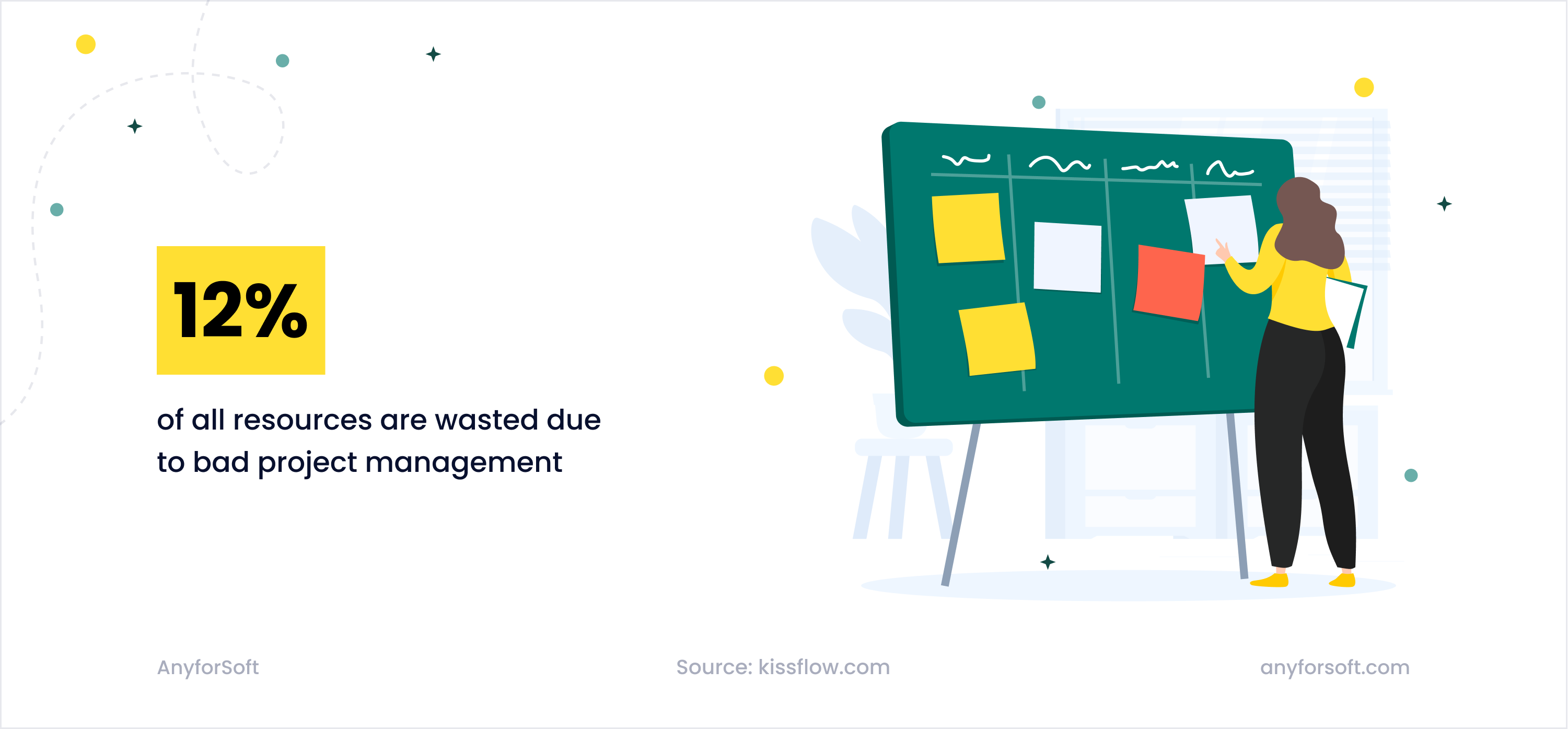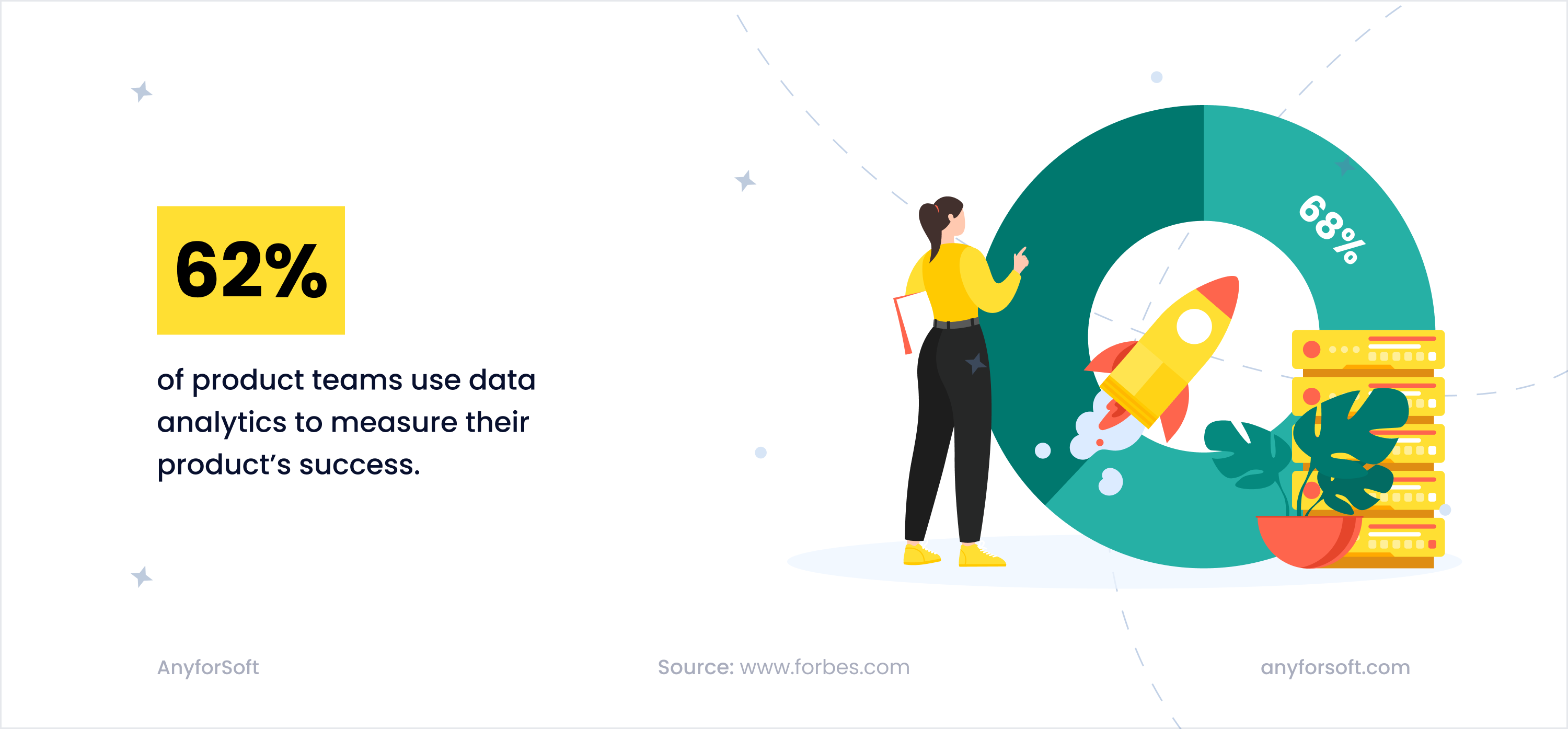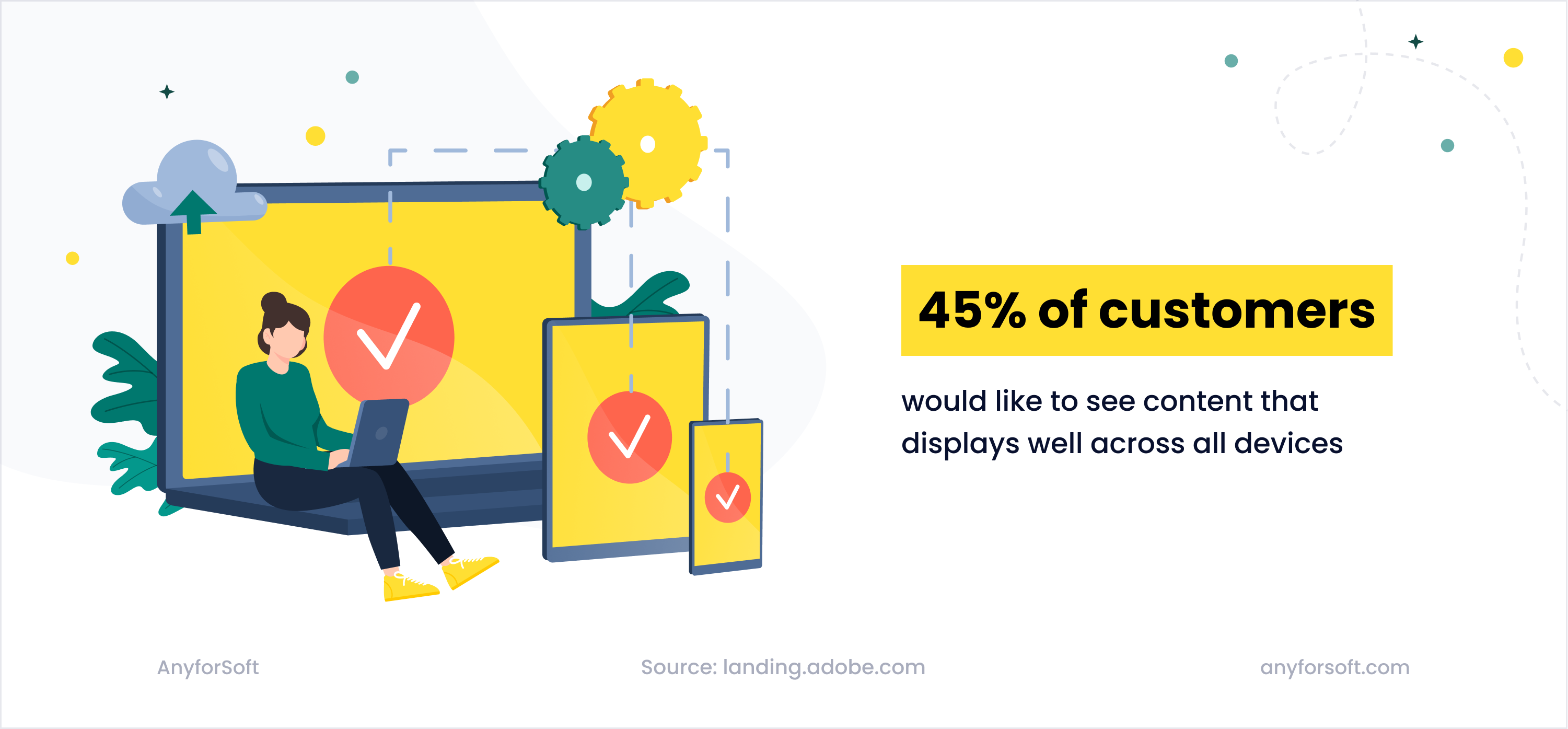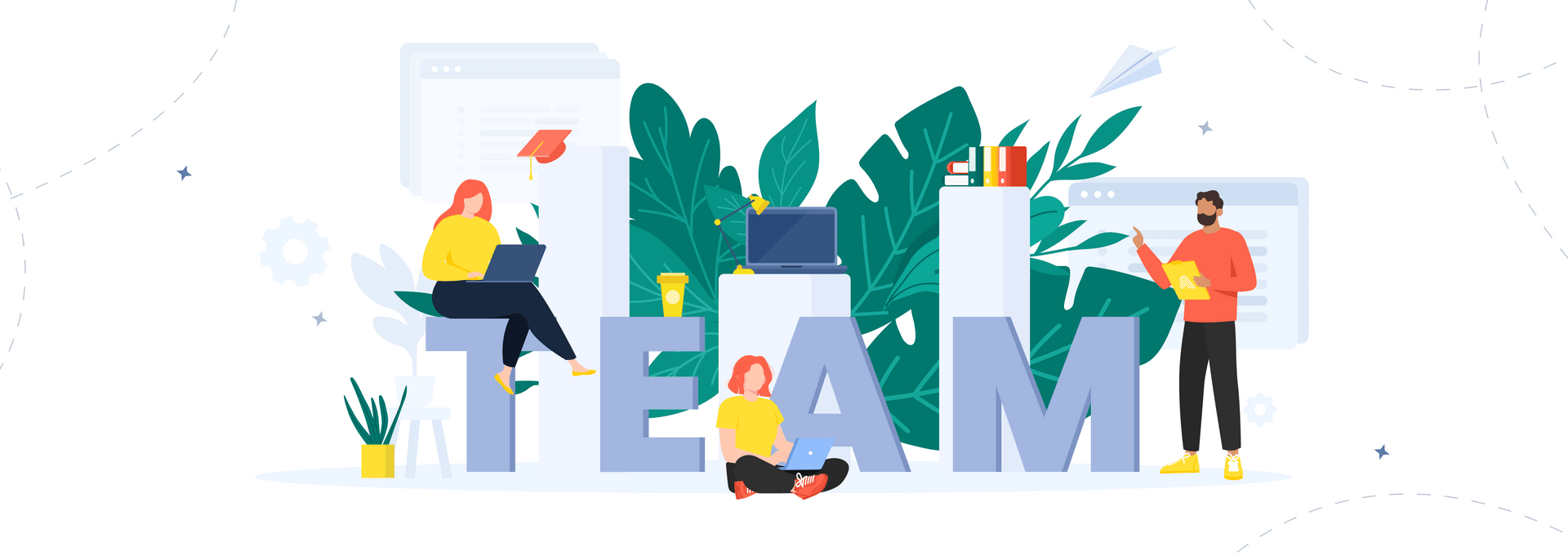They say everything starts with an idea. In fact, this is just an apt phrase behind which the product development team is hiding – real specialists that can transform an idea into something tangible. Modern business strategy demands high quality and speed to market, two categories that are always difficult to combine when it comes to creating something from scratch or even updating an existing product. How to find a balance and achieve the primary business goals? The secret is simple: build a new product development team that perfectly meets your requirements. And while a professional software product development company can provide you with all the necessary specialists, you still need to know how exactly to do this.
What is a product development team?
A simple product development team definition states it is a group of different specialists responsible for the new product design, development, and launch.
Each product team member has their role and area of responsibility; they work together on the project and individually on their part to realize tasks and meet customer needs. The process stages are determined by a product development lifecycle that reflects each step from an idea to a new product.

Product development team roles can be divided into several groups:
- Marketing: marketing research is usually conducted before new product development begins to identify a target market, competitors, and potential pitfalls; also, these specialists create the marketing strategy and determine the positioning of the product;
- Management: product management includes vision creation, product strategy and plan building, workflow monitoring, and control;
- Analytics: one of the key stages necessary for a successful product launch is the collection of information about trends, users' preferences, and needs;
- Design: this is an essential element of the product development cycle because usability and accessibility are currently in the first place in the development of a new product – it is consumer interaction that will determine further success;
- Development: the cross-functional product team should include engineers who will work on the project, which allows you to determine even at the discussion stage whether it is possible to implement the ideas and functionality or whether it requires additional team efforts, research, etc.
So, a short answer to the question 'What does the product team do' is everything from research to a product launch.
The product development team usually works on the concept, positioning, and mission. This becomes a starting point for creating a development strategy and algorithm. Prototyping could also be one of the teams' tasks. It helps to identify whether all team members are on the same page and whether the product meets project goals and expectations.
At this point, everything can be changed, improved, or fixed. The next step is to create an excellent product for the market.
Engineering teams are responsible for comprehensive testing, final troubleshooting and bug fixing, and market launch. The release is not the end of the product life cycle, and it may also include support and maintenance, updates, new version development, and removal from the market.
While you can use different teams for each crucial stage of the product development process, finding the best-fitting cross-functional team is much preferable.
Product development team roles
As already understood, the product development team unites multiple teams and specialists to achieve the most effective result. Agile project management methods are often used, providing a clear division of product development team roles and responsibilities.
Product Owner
In product development teams, the product owner has almost a key role, although he does not directly participate in the development process. He turns to the innovation team with a problem, and the specialists look for the newest solution and devise a plan for its implementation.
Providing the team with market research data, user research, information about competitors, and basic capabilities are among the primary duties of the product owner. It can guide plans, presented as user stories with acceptance criteria, determining the solution's market fit.
Product Manager
Product management is crucial across the development lifecycle, ensuring successful product creation and delivery. It encompasses strategic planning, coordination, and iterative execution. The product manager defines the product vision, conducts market research, and develops a product roadmap aligning with business objectives and customer needs.
Collaboration is vital; the product manager works with cross-functional teams to gather requirements, prioritize features, and ensure smooth development. They bridge stakeholders, facilitating effective communication and maintaining alignment.
Continuous user feedback informs product iterations. Monitoring market trends, competition, and preferences allows adaptation. Quality assurance is overseen to meet standards and deliver a seamless user experience.
Efficient product management drives success throughout the lifecycle. They coordinate product launches, working with marketing and sales for effective go-to-market strategies. Post-launch, they gather feedback, analyze performance, and iterate for optimization and customer satisfaction.
Generally, product management encompasses strategic planning, collaboration, and iterative development for successful products. They guide the process, ensuring alignment with market demands, meeting business goals, and delivering high-quality products that satisfy customers and product owners.

Program Manager
Product development teams may need a program manager to work on a complex, multi-component project. You can confuse him with a project manager because their duties are somewhat similar.
The program manager monitors the status of all components of a large project – ensuring that they all meet the requirements, are completed on time, and complement each other, allowing you to quickly and effectively achieve business objectives.
The manager develops roadmaps to show the development process's primary business goals and checkpoints. The program manager's responsibilities include coordinating and communicating with multiple product teams working on the project and ensuring productivity and development efficiency.
Project Manager
Project managers usually manage product development teams. It is considered a key position in project management, but each company independently determines the scope of responsibility and the breadth of obligations.
Being a part of a development team, the project manager is the one who distributes, prioritizes, and monitors the fulfillment of the tasks of the entire team. They use special tools (depending on the selected development methodology) to monitor progress and respond in time in case of problems.
In most product teams, the project manager reports to the stakeholders and monitors compliance with deadlines and expectations.

UX Designer
Product design is one of the essential stages of the product development lifecycle. User experience plays a crucial role in the success of both the project and the product. To create a great product, the design team must consider customer feedback, preferences, behavior, and requests. User experience is a rather broad concept that includes several key characteristics: convenience, comprehensibility, intuitiveness, usefulness, and accessibility. Innovation teams focus a lot of effort on getting the desired product.
Regarding product design team roles and responsibilities, it is worth mentioning that UX designers are guided by design requirements discussed at the beginning with product managers or product leaders.
QA Tester
More recently, the quality assurance (QA) tester position was considered optional and was not included in the team – only at the separate request of the product managers. Today, product management necessarily considers the time for checking and testing the product.
Depending on the complexity of the task, the chosen methodology, and the project's specifics, the QA tester can check the product several times in search of errors and bugs. It is the quality assurance that ensures high quality and tremendous customer satisfaction.
Data Scientist
You can find data scientists among new roles and responsibilities in product teams. This innovation is necessary if the project involves working with a large amount of data that must be analyzed, systematized, and presented as a report. This is usually necessary to make an informed decision about a product feature or to change the user experience.
The modern approach involves using data scientists only under specific conditions, so the list of their duties may differ from team to team.
This is just an essential list of product development team roles. Depending on the needs, it can be expanded by various specialists, like the engineering team, or professionals, like the chief product officer, product leader, team leader, or product manager.

How to structure your Product Development Team?
Product development team structure depends on many factors: from the central business goals to the specific product features or industry demands. In fact, many companies maintain flexibility and develop a team structure for each idea that needs implementation. This allows to supplement product teams with specialists as required and maintain efficiency all the way to successful products.
The top ways to build team structure are: by product or product line, product feature, cross-functional collaboration, customer segment, customer journey, and performance.
One of the most common ways is to include a manager for each product development stage or direction in a team, for example, for design, engineering, and product marketing. It can provide more robust monitoring and control of the project.
Another approach to engineering team structure may consider cross-functional team building.
Factors to consider before building a product development team
While the product development team must ensure the success of the product, it is up to you to prepare ahead of time. Just answer a few simple questions.
- How big is your project? The development team for developing a small application and a complex enterprise solution will differ. If you plan to build several products simultaneously or, in turn, consider hiring a few product development teams.
- Are you open to compromise? In pursuing speed, quality, and low price, you will inevitably sacrifice one of the points. If it's quality, it will require more time. An effective product development team will find the optimal solution for you, but you must take a step toward it.
- Are you ready to make mistakes? The product team can create a prototype or even an MVP so that you can collect feedback from potential users and make changes in time, but this step is not mandatory – agree on this at the beginning. You should always leave room for error.
How To Build a Product Development Team?
To create a team for particular needs, you must clearly define the goal and have the finished product vision. The professional development team will do the rest. Depending on the project's specifics, you may need specialists with advanced soft skills, specific knowledge, technical skills, or experience in a particular industry.

For Web Solutions:
Your cross-functional team should include critical specialists, such as product and project managers, a UX designer, a QA tester, and a web developer. If the idea is complex or requires more specialists, do not hesitate to involve them. When choosing a team for cooperation, pay attention to experience and already completed projects like yours.
For Mobile Solutions:
A great product team with experience in developing efficient and reliable mobile solutions will have almost the same structure but may be supplemented by a Business Analyst. The complexity of implementing your idea and the required speed to market will determine the number of team members and specialists in each role.
For Decoupled Solutions:
Decoupled technologies open up more opportunities. The product development team for such a solution should be staffed by specialists from the essential list and experienced engineers who can perform tasks of various complexity.
Summary
A robust and efficient product development team can easily lead you from idea to product success. Having built a detailed product roadmap, team members go to the goal, stopping at checkpoints for a short review and synchronization. The team's distribution of roles and responsibilities ensures constant and competent work on the project.
We at AnyforSoft are always ready to provide you with a product development team that cares: we are focused on the process and oriented on the result – to achieve our client's business goals. We are open to cooperation: feel free to contact our managers to discuss your idea.
